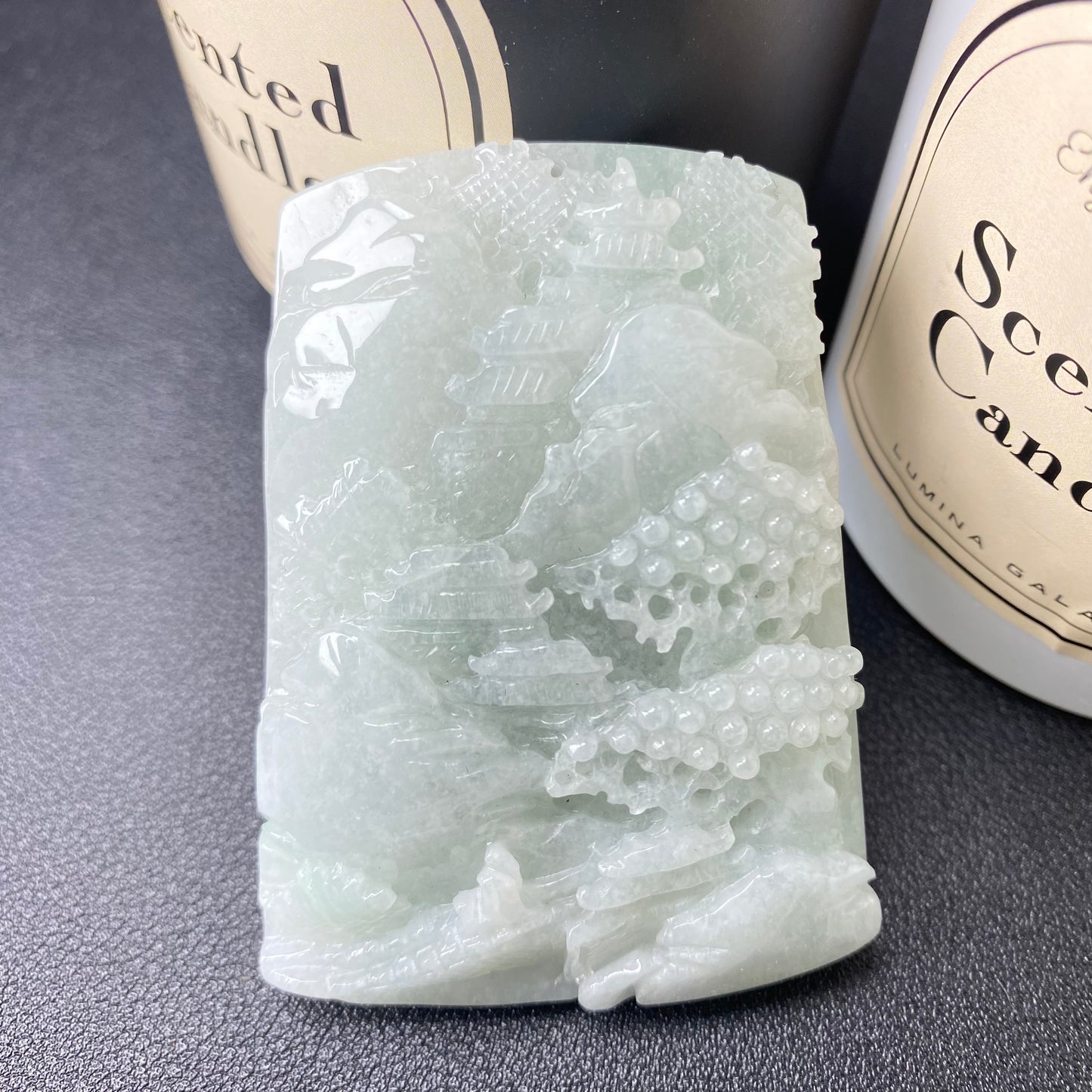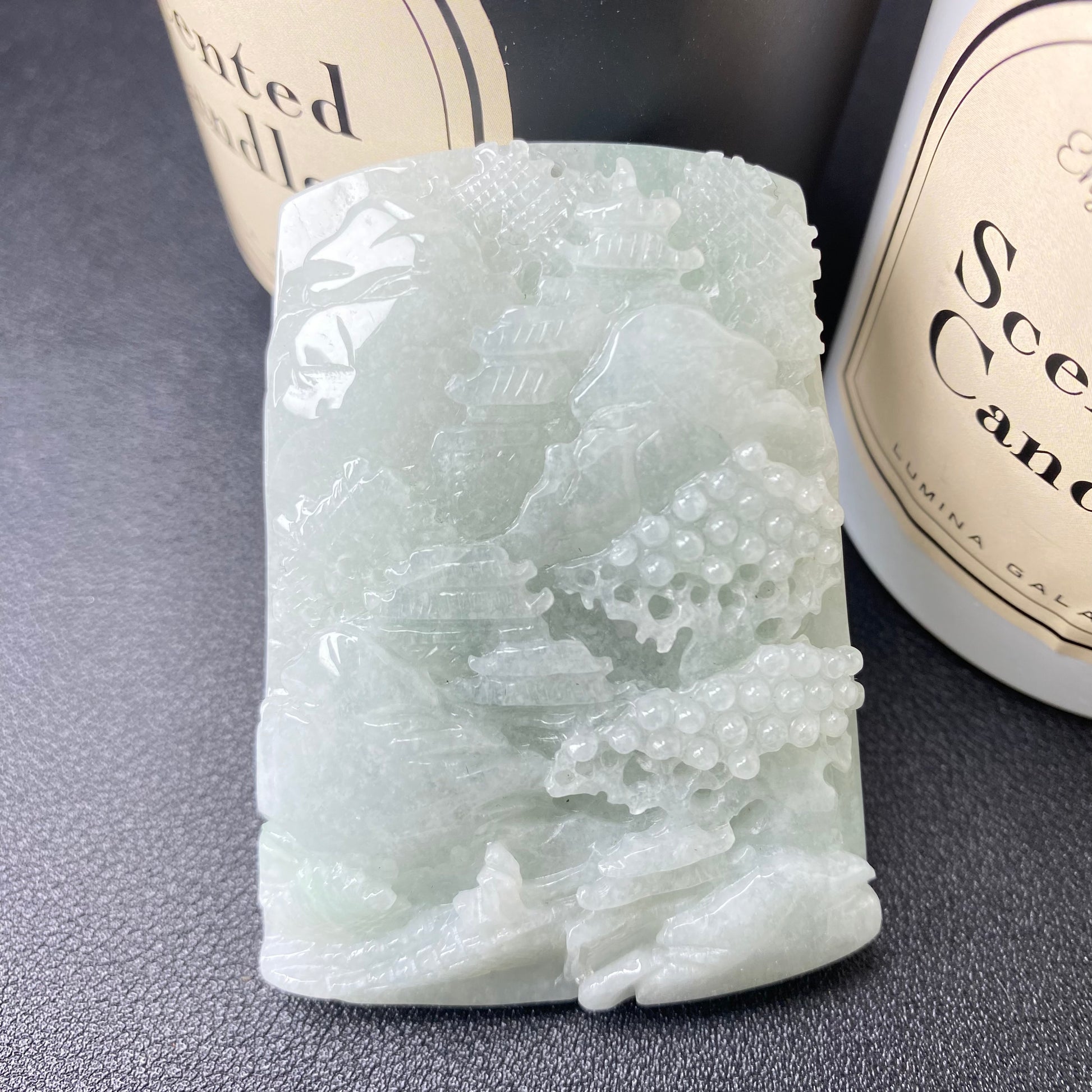ELPIS&LOVE
Jade Serenity Tranquil Pavilion Amulet
Jade Serenity Tranquil Pavilion Amulet
Impossible de charger la disponibilité du service de retrait
Jade Carving Description:
Visual Overview
The image centers on a hand cradling an irregularly shaped oval nephrite jade carving. The jade, in a pale translucent green hue, features intricate carvings of mountainous landscapes, pavilions, and a coiled dragon, all rendered with fluid lines and meticulous detail. The foreground emphasizes the jade’s organic texture and warm patina, while the blurred background reveals a minimalist workspace—a computer screen with Chinese text, a wooden desk, and faint shadows of indoor plants. The composition juxtaposes the jade’s earthy elegance against modern minimalism, creating a dialogue between tradition and contemporary life.
Material & Craftsmanship
• Jade Quality: Ice-grade nephrite jade with a semi-translucent surface. The pale celadon base is streaked with deeper jade veins, evoking mist over emerald hills. Its polished yet slightly uneven texture mimics natural rock formations, blending rawness with refined artistry.
• Artistic Details:
◦ Landscape: Delicate relief carvings depict craggy peaks, winding rivers, and pavilions with upturned eaves. Roof tiles are incised with tiny geometric patterns, while pine trees are rendered as cascading needle-like strokes.
◦ Dragon Motif: A sinuous dragon coils around the pavilion’s base, its scales etched in overlapping chevrons. The head is abstracted into a flame-like silhouette, with eyes hollowed to catch light, giving it a lifelike gaze.
Cultural & Metaphysical Significance
• Chakra Alignment: In Seven Chakra philosophy, jade resonates with the Heart Chakra (Anahata), symbolizing balance between ambition (the dragon’s upward thrust) and tranquility (the landscape’s serenity). Its green hue aligns with wood energy, nurturing creativity and emotional resilience.
• Feng Shui Symbolism: The pavilion represents stability, while the dragon acts as a wealth talisman, directing energy (qi) upward. Placed on a desk, it harmonizes workspace chi for focused productivity.
Design & Aesthetic Philosophy
• Style: A fusion of Song Dynasty landscape art and modern abstract minimalism. The jade’s unadorned edges contrast with its intricate carvings, embodying the paradox of “less is more” in Chinese aesthetics.
• Wearability:
◦ Accessories: Housed in a matte black sandalwood box with indigo silk cords and white jade tassels, it transforms from a pendant to a desk ornament.
◦ Seasonal Pairing:
▪ Autumn/Winter: Layer with a charcoal wool coat and gold-toned jewelry for a regal contrast.
▪ Spring/Summer: Pair with a linen qipao-inspired dress in sage green, letting the jade’s coolness offset summer heat.
Philosophical Essence
This piece transcends ornamentation, embodying the Taoist principle of “wu wei” (effortless action). The dragon’s poised motion mirrors the balance between ambition and surrender: its claws dig into stone (grounded determination), while its body arcs skyward (aspirational grace). The pavilion, half-hidden in mist, whispers a Zen truth—true power lies not in domination, but in harmonizing with forces greater than oneself.
When held, the jade’s textured surface becomes a tactile metaphor for life: rough edges (challenges) smooth into wisdom, while its enduring green hue reminds us that growth springs from patience. It is not merely a jewel, but a portable sanctuary—a reminder to carry mountains within, even in a world of steel and screens.
Share

